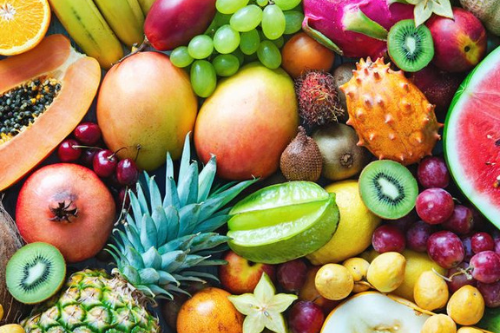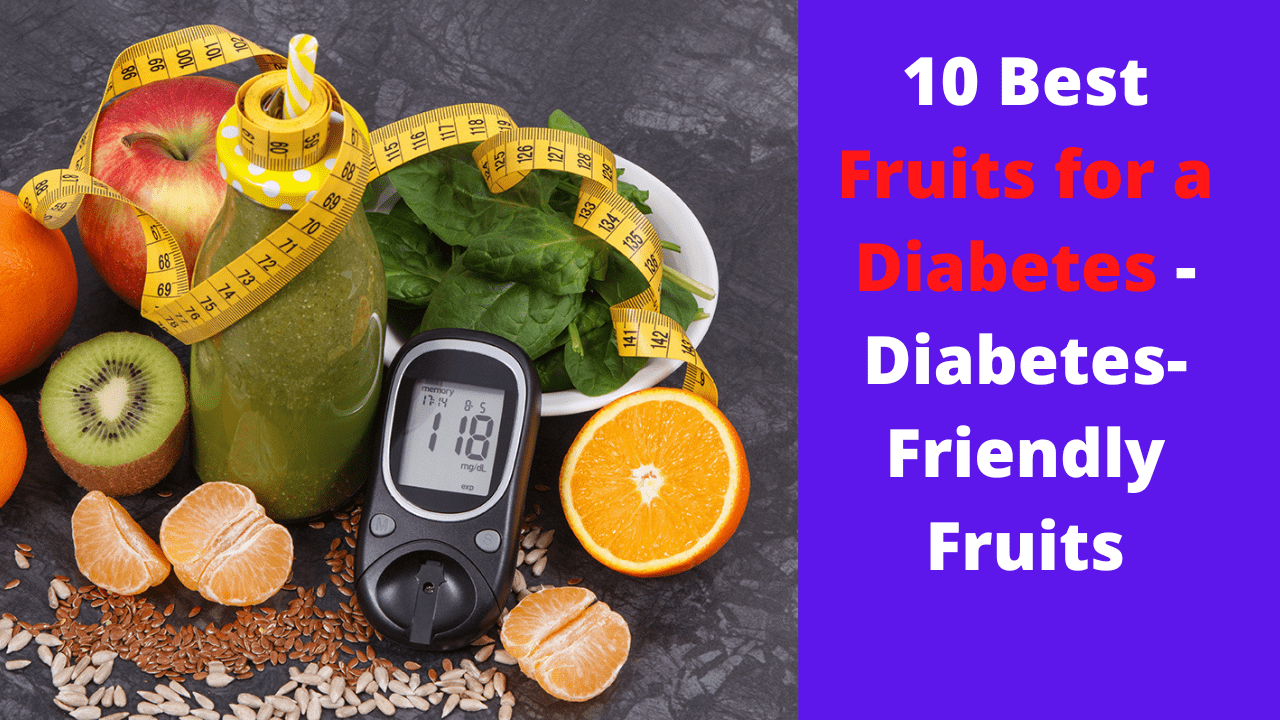Look no farther than your refrigerator’s produce drawer or the fruit bowl on your kitchen table for a diabetic-friendly treat that can help keep your blood sugar levels in a healthy range.
Unbelievably, the idea that fruit is dangerous when you need to check your A1C is a common diabetes myth that has been repeatedly disproven. In fact, many types of fruit are packed with fibre, a potent nutrient that can help manage blood sugar levels and lower your risk of developing type 2 diabetes, according to the American Diabetes Association (ADA).
What then is the best way to choose fruits for diabetes? Whole fruits, such as berries, citrus, apricots, and yes, even apples, can be beneficial for your A1C and overall health, combating inflammation, regulating your blood pressure, and more. However, other kinds of fruit, such as juice, might be bad for diabetes.
Avoid syrups and other processed fruits with added sugar and consume fruit in its whole, unprocessed form to prevent a blood sugar increase. Keep to the freezer aisle and the vegetable department in your grocery shop.
Most whole fruits are a smart choice because they often rank low on the glycemic index (GI) or glycemic load, measures of how meals affect your blood sugar levels, when it comes to making dietary decisions.
These actions will assist you in managing your diabetes and lowering your risk of developing certain complications, such as neuropathy (nerve damage), kidney disease, vision problems like glaucoma, cataracts, or diabetic retinopathy, as well as potentially fatal conditions like heart disease and stroke.
The next time you have a craving for something sweet, think about reaching for one of the naturally sweet and juicy treats listed below, courtesy of Mother Nature. You can blend it into a smoothie that is suitable for people with diabetes, or you can keep it simple and throw it into your bag to munch on while you’re on the go.
Table of Contents
Best Fruits for a Diabetes

Fruit can be a tasty method to sate hunger and fulfil daily nutritional requirements. However, sugar is present in most fruits. Fruits may not be suitable for those with diabetes, as a result of this.
According to the American Diabetes Association, any fruit is suitable for someone with diabetes as long as they are not allergic to it.
Which fruits are best for diabetics to eat are suggested in this article. The connection between fruit and blood sugar is also explored.
1. Tart Cherries Help Fight Inflammation
According to the USDA, cherries have 52 calories and 12.5 g of carbohydrates per cup, and they may be particularly effective at reducing inflammation.
According to a review published in March 2018 in Nutrients, tart cherries are also rich in antioxidants, which may help prevent heart disease, cancer, and other disorders. You can buy these fruits fresh, canned, frozen, or dried. But be sure to read the labels because many canned and dried fruits have extra sugar, which can cause your blood sugar to jump.
2. Apples
The fruit apple is a favourite. They taste great when eaten raw as a snack or dessert. Apples have a richer flavour when cooked, making them a choice in sweets with cinnamon or ginger as a spice.
Apples could be grilled after being marinated in a tiny amount of honey and spices. Roll the apples in crushed walnuts or pecans to finish. Although this dish contains some honey, it is a healthier option to many baked products made with apples.
3. Papaya
A fantastic summertime fruit to include in your diabetes diet is papaya. In actuality, the fruit’s pulp and seeds can both be consumed.
Furthermore, papaya inhibits cell damage in the body by being high in antioxidants and fibre. The low-calorie fruit is beneficial for weight loss and is rich in fibre, potassium, magnesium, folate, vitamin B, and other minerals.
4. Plum
Low-glycemic index fruits are excellent for diabetics, as was already mentioned. The plum is one of these fruits, which not only lowers the danger of blood sugar rises by requiring a long time for the body to break down the sugars.
This is because the fruit is nutrient-rich and reduces insulin resistance, making it suitable for diabetics. Additionally, plums are a great source of soluble fibre, which is another crucial component in maintaining healthy blood sugar levels. The fruit is only available during its peak season, which is from May to October.
5. Kiwis
Kiwis are high-fibre fruits that aid with sugar control because they have a low glycemic index. A kiwi has a GI of 49, which indicates that it takes time for the fruit to enter the bloodstream and does not quickly break down into glucose.
Additionally, studies have demonstrated that having fruit for breakfast considerably reduces the blood’s absorption of sugar. The main cause of this is that kiwis have a high fibre content and can hold a lot of water. Consuming the fruit causes it to absorb water and thicken into a gel, which slows down the conversion of sugar.
6. Pears
Pears are a good addition to your diabetes diet plan because they are a great source of fibre. Additionally, after being plucked, they really have a better texture and flavour than most fruits.
According to USA Pears, keep your pears at room temperature until they are mature and ready to eat (at which point they can be kept in the refrigerator). Here’s a delicious treat: Add a sliced pear to your upcoming spinach salad.
7. Oranges
Oranges are considered a member of the citrus fruit family and are regarded as one of the diabetes superfoods. The fruit is rich in potassium, folate, fibre, and vitamin C. Oranges also contain a lot of fibre, which delays the conversion of sugar after ingestion. The best method to eat oranges is to consume them uncooked, not in liquid form.
Always try to look up the fruit’s glycemic index and nutritional profile before adding it to your diabetes diet. Consider the serving size as well.
8. Strawberry
One of the most popular, energising, and nutritious sweets that contains a lot of vitamins and antioxidants are strawberries. Reduced risk of heart disease, stroke, cancer, blood pressure, allergies, constipation, diabetes, and depression are just a few of the health benefits of strawberries.
Strawberries are high in antioxidants that prevent eye damage and enhance vision, which is a risk factor for those with diabetes who have eye-related issues.
9. Apricots
The classic summertime fruit, apricots are a delicious complement to any diabetes diet plan. According to the USDA, an apricot only has 17 calories and 4 g of carbs.
Four fresh apricots contain 134 micrograms (mcg), or 15% of your daily value (DV), of vitamin A. These tasty gems are a fantastic source of fibre as well. (Three grammes of fibre, or 10% of the DV, are present in four apricots. Toss some diced fresh apricots in a salad or add them to hot or cold cereal.
10. Tart Cherries
The control of diabetes and blood sugar levels may benefit from tart cherries. In addition to giving tart cherries their vibrant red colour, tart cherry compounds, particularly anthocyanins, can increase the body’s ability to use insulin.
The substance has also demonstrated potential in lowering the risk of heart disease.
How Much Fruit Should Person Eat with Diabetes?
The majority of recommendations urge both adults and kids to consume 5 servings of fruits and vegetables each day. For diabetics, this is still accurate.
According to some recommendations, each meal should have fruit, vegetables, or both, on half of the plate.
Nonstarchy veggies, rather than fruit, should make up half of each meal for a person with diabetes. The other half should consist of high-fiber carbohydrates and protein-rich foods like beans or whole grains. Many experts also advise consuming healthy fat at every meal to promote satiety and improve vitamin and antioxidant absorption.
A medium-sized fruit or a serving the size of a baseball counts as one serving. For smaller fruits like berries, a serving size is one cup.
The serving size for processed fruit products like applesauce and fruit juice is half a cup. And it is 2 tablespoons for dried fruits like raisins and cherries.
Similar to vegetables, emphasising variety can be a terrific method to assimilate the necessary nutrients and appreciate a variety of flavours.
Conclusion
Very ripe bananas are one of the fruits with a high GI score that people with diabetes should either avoid or take in moderation. Limiting the consumption of processed, canned, or dried fruits with added sugar is also a good suggestion.
Fruit still supplies important nutrients to a healthy diet and is a necessary component. Prior to limiting their intake of fruit, a person should reduce their intake of other sweet meals.
Source:
- http://www.diabetes.co.uk/diabetes-and-obesity.html
- https://www.ncbi.nlm.nih.gov/pmc/articles/PMC5388466/
- https://www.diabetes.org/healthy-living/recipes-nutrition/eating-well/fruit
- https://www.diabetes.org.uk/guide-to-diabetes/enjoy-food/eating-with-diabetes/food-groups/fruit-and-diabetes
- https://www.uofmhealth.org/health-library/aa20698
- https://www.heart.org/en/health-topics/caregiver-support/what-is-a-serving#.V206YpMrKV5
- https://www.medicalnewstoday.com/articles/311220
- https://www.everydayhealth.com/type-2-diabetes/best-fruits-for-diabetes/
